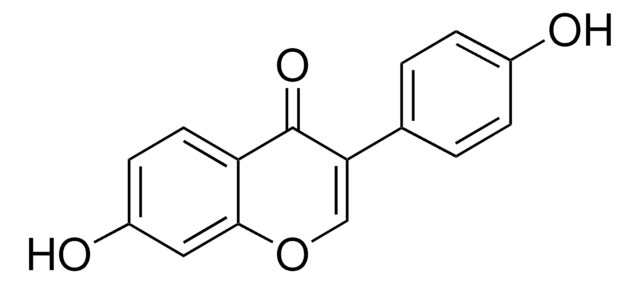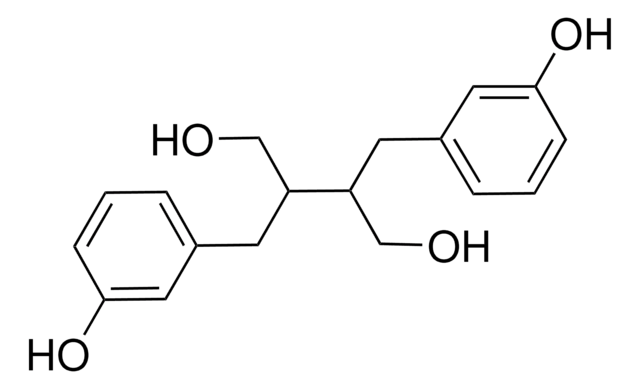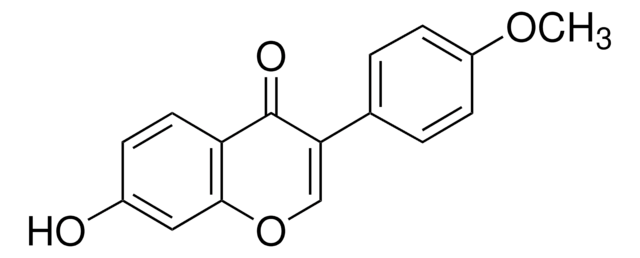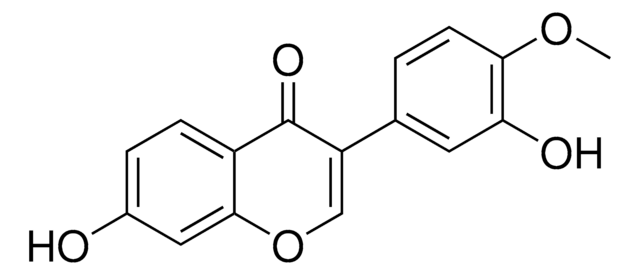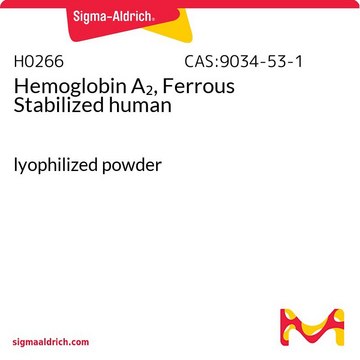G2785
Glycitein
≥97% (HPLC)
Synonym(s):
4′,7-Dihydroxy-6-methoxyisoflavone, Glycetein
About This Item
Recommended Products
biological source
synthetic (organic)
Quality Level
assay
≥97% (HPLC)
form
powder
solubility
DMF: 1 mg/mL, clear, colorless to faintly yellow
storage temp.
−20°C
SMILES string
COc1cc2C(=O)C(=COc2cc1O)c3ccc(O)cc3
InChI
1S/C16H12O5/c1-20-15-6-11-14(7-13(15)18)21-8-12(16(11)19)9-2-4-10(17)5-3-9/h2-8,17-18H,1H3
InChI key
DXYUAIFZCFRPTH-UHFFFAOYSA-N
Looking for similar products? Visit Product Comparison Guide
Application
Biochem/physiol Actions
Storage Class
11 - Combustible Solids
wgk_germany
WGK 3
flash_point_f
Not applicable
flash_point_c
Not applicable
ppe
Eyeshields, Gloves, type N95 (US)
Choose from one of the most recent versions:
Already Own This Product?
Find documentation for the products that you have recently purchased in the Document Library.
Customers Also Viewed
Articles
Antioxidants protect biological systems from oxidative damage produced by oxygen-containing free radicals and from redoxactive transition metal ions such as iron, copper, and cadmium.
Our team of scientists has experience in all areas of research including Life Science, Material Science, Chemical Synthesis, Chromatography, Analytical and many others.
Contact Technical Service